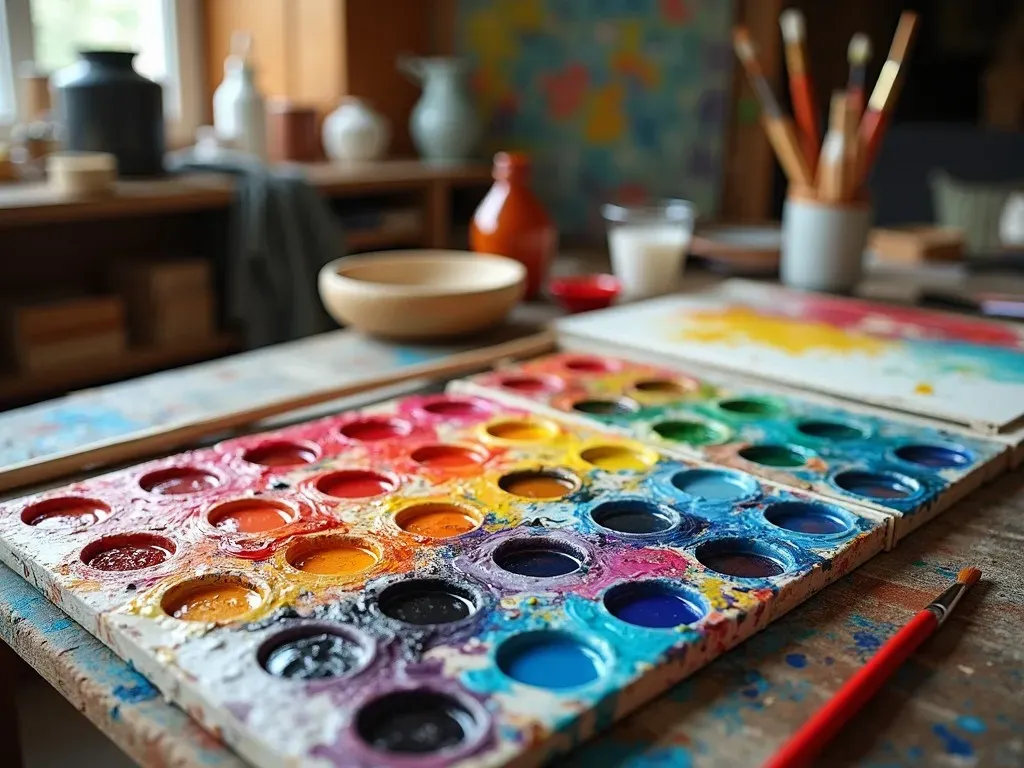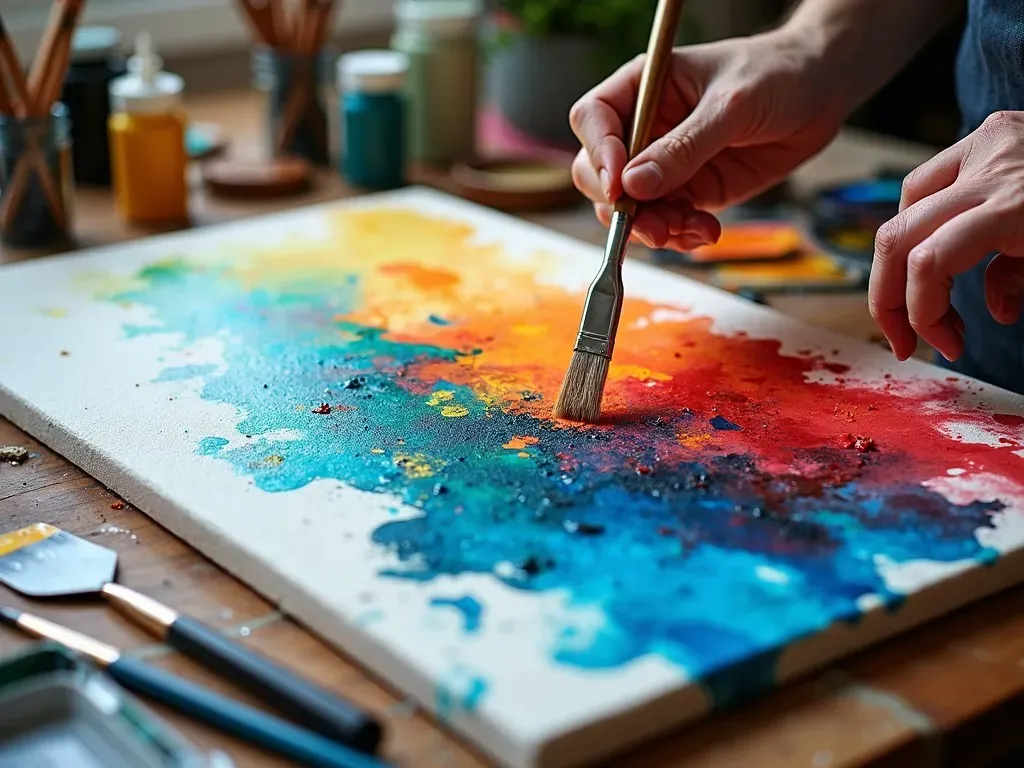Art Oil Color refers to the rich, soluble medium used in oil painting, treasured by artists for its versatility, vibrancy, and unique working properties. With numerous oil paint colors available, aspiring artists often find it essential to understand their palettes, mixing potential, and the characteristics of these oils. This guide delves deep into the captivating world of art oil color, providing insights, tips, and essential Techniques that every artist should know.
The Basics of Oil Paint
Oil paint is a complex mixture of pigments suspended in oil, usually linseed oil. This combination allows for an extended drying time, enabling artists to blend colors seamlessly and layer textures. The beauty of oil paint lies in its ability to produce brilliant colors thanks to the rich pigmentation. Working with oil paints often yields stunning results that are both enduring and expressive.
Key Characteristics of Oil Paint:
- Slow Drying Time: Unlike acrylic paints, oil paints dry slowly, giving artists the flexibility to work on their pieces over extended periods.
- Vibrancy: Oil colors maintain their vibrancy and brilliance over time, especially when properly cared for.
- Versatility: They can be used in various painting techniques, including glazing, scumbling, and impasto.
Selecting Your Oil Colors
As you begin your journey into oil painting, selecting the right colors is crucial. A well-thought-out palette can dramatically influence the effectiveness of your artwork. Typical palettes for beginners often include these essential colors:
| Color Name | Hue | Characteristics |
|---|---|---|
| Titanium White | White | Bright and opaque for mixing and creating highlights |
| Cadmium Yellow | Yellow | Strong pigmentation, excellent for mixing and warmth |
| Alizarin Crimson | Red | Deep, transparent red for rich shadows and vibrant mixes |
| Ultramarine Blue | Blue | Intense blue that works as a strong base for mixes |
| Burnt Sienna | Brown | Earthy tone used for shadows and depth |
| Ivory Black | Black | Deepest shade for contrast and depth |
Essential Tools for Oil Painting
To get started with oil color, you will need a few basic tools aside from your paints:
- Brushes: Various sizes and shapes (flat, round, filbert) for different techniques.
- Palette: A flat surface to mix colors, commonly made from wood or glass.
- Palette Knife: Perfect for mixing colors and applying paint in a textured form.
- Mediums: Such as linseed oil or turpentine to alter the consistency and drying time of paints.
- Canvas: Primed canvas or boards suitable for oil painting.
How to Mix Oil Paint Colors
Understanding how to mix oil colors effectively is essential for creating a wide range of hues and shades. The following list highlights some basic color mixing principles:
- Primary Colors: Red, yellow, and blue cannot be created by mixing other colors.
- Secondary Colors: Created by mixing two primary colors (e.g., red + yellow = orange).
- Tertiary Colors: Formed by mixing primary and secondary colors (e.g., red + orange = reddish-orange).
Basic Mixing Techniques
- Glazing: A technique where a thin transparent layer of paint is applied over a dry layer to add depth.
- Scumbling: A method involving a dry brush technique to create a broken color effect.
- Impasto: Thick application of paint to create texture and dimensionality.

Popular Brands and Where to Buy Oil Paint
When purchasing oil paints, consider reputable brands known for their quality and professionalism. Below are a few popular brands:
| Brand Name | Overview |
|---|---|
| Winsor & Newton | Renowned for their professional-grade oil colors. |
| Gamblin Artists Colors | Known for high-quality pigments and a wide color range. |
| Sennelier | French brand famous for buttery texture and richness in color. |
| Michael Harding | High-quality, handmade oil paints praised for their pigment intensity. |
Where to Buy Oil Paint
Oil paints can be purchased at various art supply stores, both physical and online. Here are a few trustworthy websites:
Oil Color Chart for Mixing and Reference
Oil color charts are essential resources for artists, helping them to visualize possibilities and combinations. Here’s an example chart for reference:
| Base Color | Mixed Color |
|---|---|
| Cadmium Yellow | Yellow-Orange |
| Ultramarine Blue | Greenish Shade |
| Alizarin Crimson | Rich Purple |
By referring to oil color charts, artists can experiment with mixing and find the palette that works best for their unique style.
Remaining Techniques for Perspective and Depth
One of the hallmarks of oil painting is the ability to create depth and perspective through layering and color choices.
Layering Techniques
- Fat Over Lean: Begin with lean paint (less oil) and gradually layer on thicker, ‘fatter’ paint to prevent cracking.
- Underpainting: Start with a monochrome underpainting to establish values before adding color.

Frequently Asked Questions (FAQ)
1. What is the best oil paint for beginners?
The best oil paints for beginners are those that offer good pigmentation and workability. Brands like Winsor & Newton or Gamblin provide excellent starter sets at reasonable prices.
2. How do I clean my oil brushes?
Clean your oil brushes with solvent, such as turpentine or mineral spirits, and follow up with soap and water to ensure all residue is removed.
3. Can I mix oil paint with acrylic paint?
Generally, it’s best to keep oil paints and acrylic paints separate, as they have different drying times and mixtures. However, some artists use acrylics under oil as an underpainting.
4. How long do oil paintings take to dry?
The drying time for oil paintings can range from days to months, depending on the paint thickness and the medium used.
5. Can I use regular brushes for oil painting?
While you can use regular brushes, it’s highly recommended to use brushes specially designed for oil paints, as they are more durable and better suited for the medium’s characteristics.
By understanding the key elements surrounding art oil color, aspiring artists can equip themselves with the tools and knowledge needed to create stunning oil paintings while exploring their unique artistic styles.

